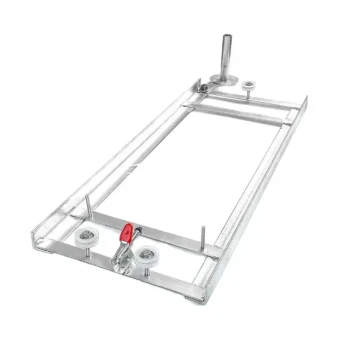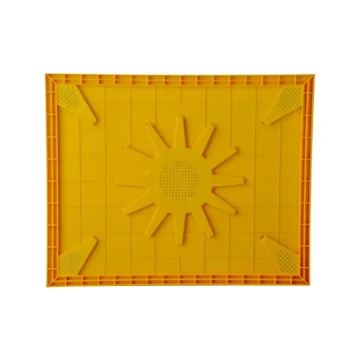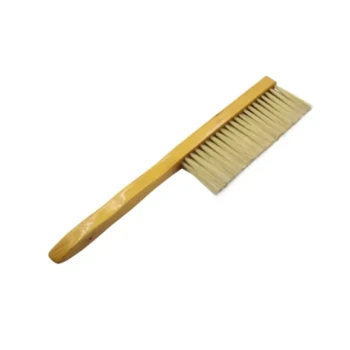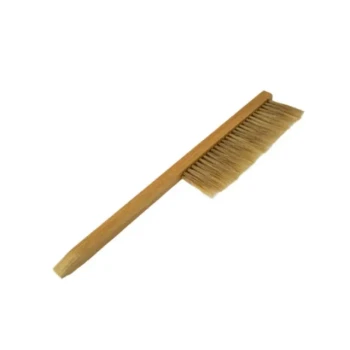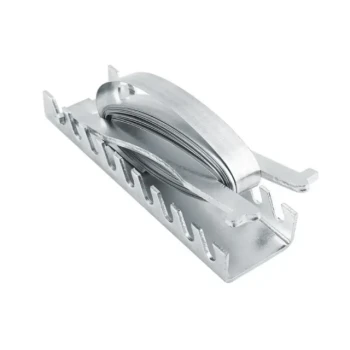The primary pest control benefit of a screened bottom board is that it creates a one-way exit for pests, particularly Varroa mites. When mites are dislodged from a bee, they fall through the mesh floor and cannot climb back into the hive, effectively breaking their life cycle and reducing the overall pest load within the colony.
A screened bottom board is not a standalone pest solution but a foundational tool for Integrated Pest Management (IPM). Its true value lies in providing passive, continuous pest reduction while enabling more effective monitoring and active treatment methods.
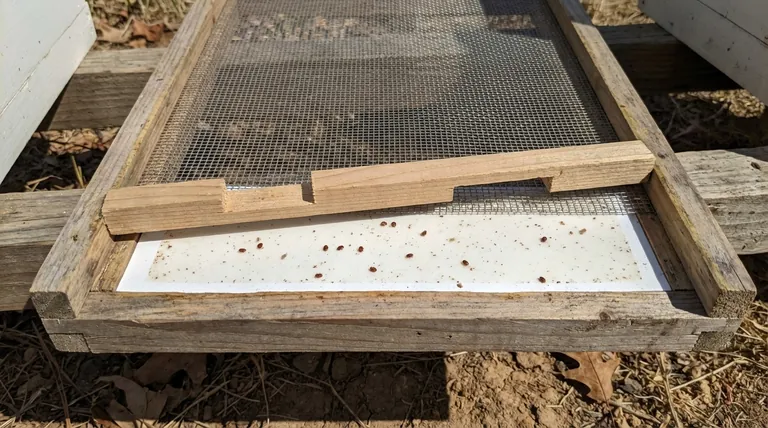
The Core Mechanism: Breaking the Pest Re-entry Cycle
A screened bottom board fundamentally changes the hive environment by replacing the solid wooden floor with a durable, #8 gauge hardware cloth screen. This simple modification has a significant impact on pests that cannot fly.
How Mites Become Dislodged
Varroa mites are the most significant pest facing honey bees. They occasionally fall off their host bees due to the bees' natural grooming behaviors or simply by losing their grip.
The "One-Way Door" Effect
With a solid bottom board, a fallen mite can easily climb back onto a passing bee and re-infest the colony. A screened bottom board prevents this entirely.
Once a mite falls through the screen, it is permanently removed from the hive. This passive removal constantly lowers the in-hive mite population without any active intervention from the beekeeper.
A Platform for Active Pest Management
Beyond its passive function, a screened bottom board is a crucial tool that empowers the beekeeper to actively monitor and manage pests more effectively.
Enabling Accurate Mite Counts
A sticky board (a white, corrugated plastic sheet coated with a sticky substance) can be inserted below the screen. Mites that fall through are trapped on the board, allowing the beekeeper to perform a "mite drop count."
This count provides a reliable estimate of the infestation level within the hive, enabling informed decisions about when and how to treat.
Facilitating Non-Chemical Treatments
The screen is essential for certain treatment methods like the "sugar shake." In this method, bees are dusted with powdered sugar, which encourages vigorous grooming and dislodges mites.
The mites, coated in sugar, fall directly through the screen and are removed from the hive, providing a way to reduce the mite load without chemical intervention.
Managing Other Pests
The space below the screen can also be used for small hive beetle traps. These pests fall through the screen and are caught in the traps below, preventing them from harassing the bee colony.
Understanding the Trade-offs
While highly effective, screened bottom boards are a component of a larger strategy and have considerations that require management.
Not a Complete Solution
A screened bottom board alone will not solve a severe Varroa mite infestation. It is a tool for reduction and monitoring, and must be used in conjunction with a comprehensive pest management plan that may include other treatments.
Considerations for Winter
The excellent ventilation provided by a screened bottom board is a major benefit in hot, humid climates. However, in regions with cold winters, this same airflow can create a draft.
Most beekeepers use a removable insert or "closure board" to block the screen during the coldest months, converting it back to a solid bottom to help the colony conserve heat.
Making the Right Choice for Your Goal
Integrating a screened bottom board is a strategic decision that enhances your ability to manage hive health effectively.
- If your primary focus is passive mite reduction: A screened bottom board provides a constant, low-effort method to decrease the ambient pest population throughout the active season.
- If your primary focus is data-driven treatment: Use the screen in combination with a sticky board to monitor mite levels accurately, ensuring you only treat when necessary.
- If your primary focus is ventilation and moisture control: The screen offers superior air circulation, reducing humidity and helping bees regulate the hive's internal temperature more efficiently.
Ultimately, a screened bottom board transforms the floor of your hive from a simple surface into a powerful diagnostic and management tool.
Summary Table:
| Function | Benefit | Key Use Case |
|---|---|---|
| Passive Pest Removal | Creates a one-way exit for mites, breaking their life cycle | Continuous, low-effort pest reduction |
| Pest Monitoring | Enables accurate mite counts with a sticky board | Data-driven decision-making for treatments |
| Treatment Facilitation | Essential for non-chemical methods like the sugar shake | Supporting chemical-free IPM strategies |
| Ventilation & Moisture Control | Improves air circulation, reducing hive humidity | Managing hive climate in warm conditions |
Upgrade your apiary's pest management strategy with professional-grade equipment from HONESTBEE.
As a trusted supplier for commercial apiaries and beekeeping equipment distributors, we provide the durable, effective tools you need for success. Our screened bottom boards are designed for maximum pest control and longevity.
Let us help you build a healthier, more productive operation. Contact our wholesale team today to discuss your specific needs and volume pricing.
Visual Guide
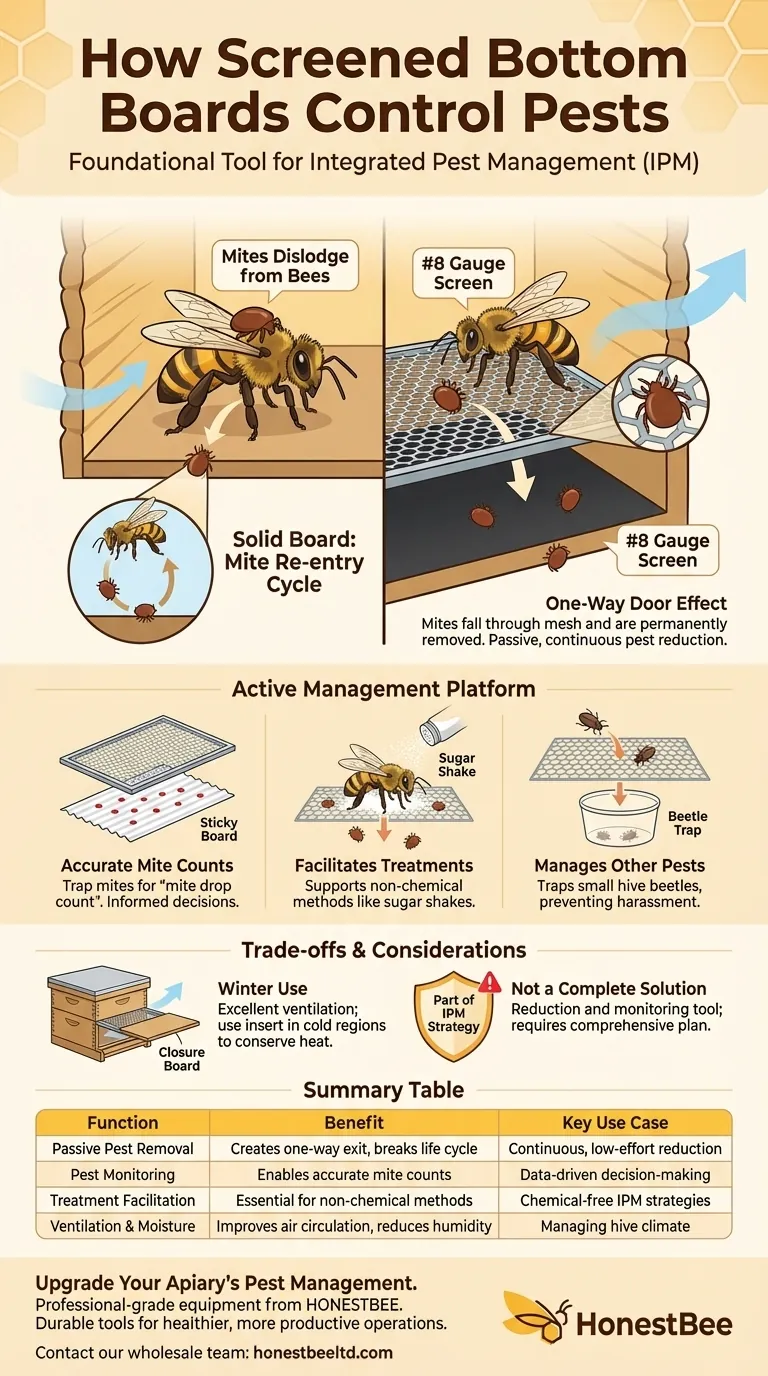
Related Products
- Langstroth Screen Bottom Board for Beekeeping Wholesale
- Australian Pine Wood Langstroth Screen Bottom Board for Wholesale
- HONESTBEE Wooden Bee Escape Board with Triangle Mesh Design for Beekeeping
- Black Plastic Beetle Barn Hive Beetle Trap for Beehives
- Boardman Entrance Bee Feeder Durable Galvanized Steel and Wood Construction for Beekeeping
People Also Ask
- What are some considerations when choosing between solid and screened bottom boards? Optimize Hive Health & Pest Control
- What are the benefits of using a screened bottom board for beehives? Improve Ventilation & Mite Control
- What are the benefits of using a screened bottom board in warm or humid climates? Boost Hive Health & Control Pests
- How should the screened bottom board be used throughout the year? A Guide for Healthy Hives
- What are the main benefits of using a Screened Bottom Board in beekeeping? Enhance Hive Health & Productivity






